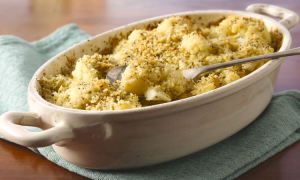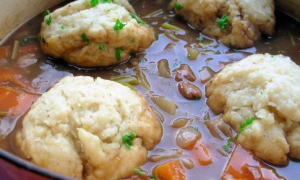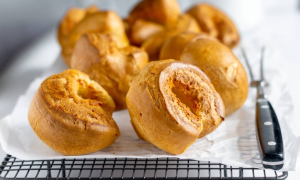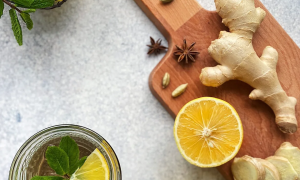
The Way to Paint a Guitar?
As a guitarist, you probably know that although the noise your guitar gets is vital, its look is every bit as important. This is as it’s an extension of your creative self. In reality, lots of artists — from Prince into Woody Guthrie — have made cosmetic changes to their own instrument. Obviously, if that is something that you’re considering, the question is: how can you paint a guitar?
Believe it or not, painting a guitar is really much easier than you could have imagined. At precisely the exact same time, you have to be cautious, as it’s a musical tool in the end. Therefore, If You Would like to tackle this project on your own but also need to Make Sure It Is a success, this is the advice that you will need:
Tips to Remember
Before you begin, there are a couple things which you’ll have to remember. These tips will help prevent any unnecessary hassle or harm through the painting process:
That is a comprehensive project: although the true process is not too complex, it’s time-consuming. In complete, you might spend anywhere from several hours to a couple of days painting your own guitar. This consists of the drying period too.
Possessing a proper painting surroundings : you’re likely to be managing a couple of dangerous and poisonous chemicals. That is the reason you need to be careful to paint your guitar at a place with loads of airflow. Even thenyou ought to make it a point to overlook the essential security wear.
Keep it mild : when it has to do with the coat of paint, much less is more. Not only can this assist your guitar surface dry faster, but in addition, it will help to maintain the tone. Even though it’s improbable that paint will alter the tone of your guitar, also many thick layers can distort the original seem a little.
Follow each of the measures : it could be tempting to just put in a coating of paint into your guitar. This technique, however, is not likely to do you some good. Not only will the end seem cluttered, but there’s also a fantastic possibility that the paint will begin to peel within a brief while too.
Would You Paint Any Guitar?
The brief reply to this query is: yes, it is possible to paint guitars. This, naturally, does not tell the complete story. See, when painting your guitar, then you must always check which kind of wood it consists of. The precise type used will frequently rely on the purchase price label attached to the guitar. Cheaper brands will spring up to get high-quality woods, whereas the less costly choices will have lower-quality materials.
The main reason the timber is significant is the fact that it is going to ascertain the total tone of this instrument. Strong wood guitars are created so they could’age’ over the years . Hence, the elderly they get, the better they seem. In such cases, also much of paint may block or alter this aging process. Consequently should maintain the layers as thin as you can .
If you’re coping with a guitar using a laminate coating , however, there are not quite as numerous rules to follow along. All things considered, these kinds of guitars are intended to sound a particular way. Therefore, you can manage to become picky about the sort of paint you use or perhaps the number of layers you paint .
What Type of Paint Do You Want?
When painting a guitar, then you may often discover that nitrocellulose lacquer is your very best. The main reason why this can be a golden standard in the business is that even the very best in the industry — companies such as Fender — rely upon it. So, by using this form of paint, then you can make certain you can get the appearance that you want , without any harm to the guitar.
Perhaps the principal point from the nitrocellulose lacquer is the simple fact that it could be sprayed with very little hassle. You will find even spray paints created particularly for guitars, which may be sprayed in the can quite easily. Obviously, there are a few people who utilize even automotive spray paint to this project.
If you’d like a more unique appearance, you could always change over to acrylic paints. These allow you to hand paint your layouts on your own instrument. On occasion, this kind of paint can also dry quicker. That having been said, you need to understand there are a number of drawbacks to this kind of paint.
Namely, as you’ll be relying upon a brush, then you want a lot of ability to finish this undertaking. If you are not familiar with a paintbrush, then there’s a fantastic likelihood that the final result won’t seem so terrific. So this way is frequently for the ones that are somewhat more inclined than the average guitarist.
Prepping Your Guitar
As previously mentioned, painting your guitar is not as straightforward as simply spraying or cleaning paint within the present layer. Instead, if you would like a good-looking guitar, then you’re likely to have to prep the tool first. Simply speaking, it follows that you want to prepare the surface to be painted. To do so, follow the following steps below:
Step 1: Eliminate the Hardware
The very first thing you’re likely to have to do would be to strip down your guitar . After all, you only need to paint the bass. This usually means that you will need to eliminate all the hardware. Including the strings, knobs, pickups, output jack, bridge, pickguard, strap buttons, and whatever else which is not likely to be painted.
Step 2: Analyze the Surface
This can seem like an odd measure but it’s necessary, especially if your guitar is quite old. Watch, in that time, the surface of the guitar could have picked up nicks, dents, and much more. Although these might not be overly noticeable today, this will surely change throughout the painting process. To prevent these showing up, carefully analyze every inch of the surface.
If the dent is rather heavy, then you need to use a wood filler in these regions. This can even out the holes and may subsequently be sanded so they will lie flat. On top of that, these fillers could be painted as well.
Measure 3: Sand the Surface
Following that, you may move onto sanding the wood . This is done in order to eliminate any present paint in the guitar, and to even out any imperfections. For the best results, try using sandpaper using three different grits — 120, 220, and 320. Begin with the 120 and then slowly proceed onto the 320 since the surface gets smoother. Don’t forget to sand with the grain instead of against it if doing this.
Step 4: Wipe Down the Guitar
Because of all of that sanding, you’ll realize there is quite a little dust on the surface of the guitar in addition to anyplace else. But you will need a smooth painting surface, however, so all of this dust has to be eliminated. It’s possible to use a gentle blower or vacuum to eliminate the dust fully. Slimming the guitar may provide you the very same results too.
Measure 5: Masking Bare Areas
Now, there are a number of regions of the guitar you might not need to paint , such as the neck, as an example. For this function, it’s ideal to utilize high-quality masking tape to segment off these areas. In this manner, you’ll have the ability to protect the surface and ensure that the tape is readily eliminated, when required.
Preventing the Guitar
The next thing that you will need to consider is how you’re likely to secure your guitar while priming and painting it. As you can imagine, one of the easier choices entails putting the tool on a seat and spraying on it. While this does provide you with a good surface to operate on, in addition, it can double the time with this particular project. This is because you’ll have to wait until every side dries thoroughly, before going on another one.
It’s for this reason that a lot of men and women would rather eliminate the neck of this guitar and also to suspend the entire body from a tight wire. In this manner, you have easy access to all regions of the guitar, concurrently. Therefore, though it can be trying to elect for this position, you might discover that you are in a position to finish your painting project a good deal earlier.
Priming Your Guitar
Much like the paint, then you still have a choice of either cleaning or spraying on the primer. Obviously, when you would like to make things easier, it’s ideal to go with this spray. You will find it a terrific deal simpler to use narrow as well as layers.
After spraying, be certain that you keep the nozzle of the can approximately 8 inches off in any way times. Following the initial layer, allow the primer dry for at least 20 minutes. Then go right ahead and add a second layer. You may repeat this process about 5 or 3 occasions , with 20-minute periods between. Following the last layer, allow the guitar dry for about 3 times .
The following step is to sand the guitar . Here, you may use a grit of about 120. Ensure all the regions are smooth and even. When there’s a trickle residue, then you might choose to utilize a slightly lower tier sandpaper but avoid anything too unpleasant.
Painting Your Guitar
Then, it’s time to move onto the actual painting process. So far as the spraying moves, you’ll want to use exactly the identical technique as with this primer. But here you have to go over every section a bit more closely . Unlike using the primer, then you can not actually sand the paint off you’ve placed on.
Once more, it’s all about layers when painting. The precise amount of layers will rely on the colour you’re using in addition to the final result which you would like to attain. This may mean anywhere from 3 to 6 coats of paint.
It’s vital that you wait till every layer has dried thoroughly before spraying the following level. Otherwise, you’ll come face to face with drips and also an irregular finish. Following the last coating, wait for no less than 24 hours before proceeding on the next phase.
Lacquering, Sanding, and Polishing the Guitar
It’s a great idea to bring a couple layers of lacquer for your own guitar. Not only does this include a nice shiny appearance but can also be crucial in protecting your paint project. Consequently, if you do not need all of your hard work to go to waste, this is certainly something you need to do.
Together with the lacquer, a larger amount of layers provide you more protection. At precisely the exact same time, in addition, it signifies a glossier surface, and that is not something that everybody wants. Thus, you might choose to discover a middle ground here when spraying lacquer on the guitar.
The very same rules apply as if priming and painting the guitar. You must always wait for a single coating to dry before spraying another. After the last layer was added, allow the guitar dry for another quantity of time. Most professionals choose to allow the lacquer dry for about 2 to 4 months to find the best outcomes.
When you’re sure the lacquer has dried, you may then sand down the guitar once again. Here, it’s ideal to use the least abrasive grit potential — between 800 and 2000. You ought to sand down the surface till it seems smooth and nice in every area.
The last step would be to utilize a cotton fabric and an appropriate polishing chemical to shine the surface of the guitar. Rub some polish to the surface and maintain working it in until it’s been fully implemented. After that, move onto a different section and keep until the whole guitar was covered.
This can be the ultimate guide to painting a guitar. Provided that you’re eager to make the attempt, this is something which you will surely have the ability to deal with on your own.






